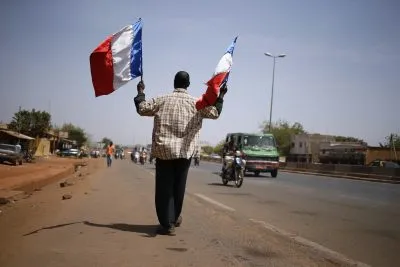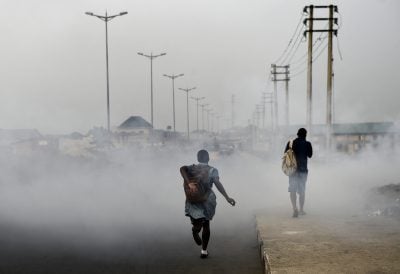The Economist describes how Liquid Telecoms riggers, having brought the cable all the way from Cape Town in South Africa to the town of Chirundu on the South
Africa–Zambia border, found themselves facing a major problem.
The idea had been to run the cables along bridges over the Limpopo river which marked the boundary between the two countries. But despite assurances that permission to do so was on its way, the official documentation had not yet arrived. Although Zambia was ready to be connected to the network which eventually linked up with undersea cables off the South African coast, bureaucracy was once again standing in the way. Then someone spotted two disused electric pylons on either side of the river. If the cable could be suspended on the pylons, they argued, no specific permission was needed.
Having found a solution, the riggers set about their difficult task. There were yet more hurdles to overcome – the cable was almost washed away when attempting to secure it on the pylons, they then ran into another, totally unexpected, problem. There was a beehive on one of the pylons containing a swarm of angry bees. Nothing daunted, the riggers improvised a beekeeper’s outfit from four shirts belonging to Rudnick, an overall, insulating tape and a mosquito net. The cable was secured and a little later, Zambia was fully connected up.
Was he satisfied with the speed at which his company was operating thus far, I asked. Can things go faster?
“I’m never satisfied with the speed, I always want to do it faster, because our objective was to start with the backbone, to move on to redundancy, to put in ring topology, to put in multiple metro rings.”
Metro rings, he explained are cables that surround a city. “We’ll put a ring around the city and inner rings. For example, the central business district (CBD) will have ring around it; it will have an outer ring and perhaps a third or fourth and sometimes, even a fifth ring. We will now take spurs or sub-rings off those rings, to provide services to the city.
“A network designed completely from a redundancy point of view means that if there’s a fibre break anywhere in the ring, the service will then work the other way around the ring, meaning that it’s built for a lot of resilience.”
How far has Liquid Telecom got in establishing its metro rings?
“Now that metro rings are in place in most of the cities we’re operating in, we’re putting in the last mile,” he says. This involves running cables down most streets and to homes and businesses. “Who are Liquid Telecom’s current customers,” I asked. “A lot of mobile operators are using our network for base-station backhaul and for their international connectivity. But also large and medium enterprises are our customers and a growing residential and small business base as well.” He explains that, in the past, mobile operators could link their base stations using microwave but this option is no longer viable because, particularly with 4G, microwave cannot cope with the volume of data: “So we are now connecting all of their base stations onto the fibre-optic network in innovative ways, which saves them having to operate a complex transmission network,” Rudnick adds.
What is the capacity of the network, I wanted to know. How many more people can be connected up?
“The networks have got enormous amounts of capacity and we’re still scratching at the surface in terms of making that capacity available to people in the countries where our networks reach.
Want to continue reading? Subscribe today.
You've read all your free articles for this month! Subscribe now to enjoy full access to our content.
Digital Monthly
£8.00 / month
Receive full unlimited access to our articles, opinions, podcasts and more.
Digital Yearly
£70.00 / year
Our best value offer - save £26 and gain access to all of our digital content for an entire year!
 Sign in with Google
Sign in with Google 


